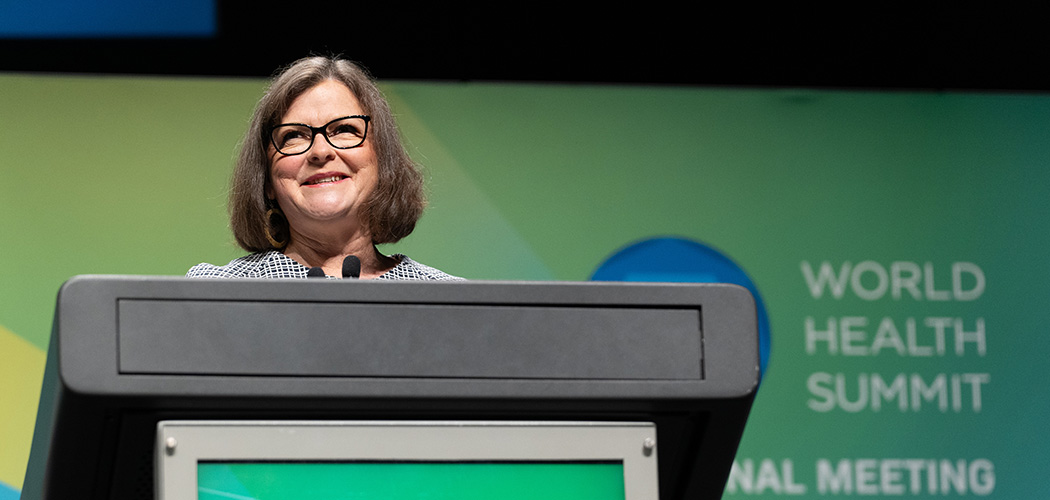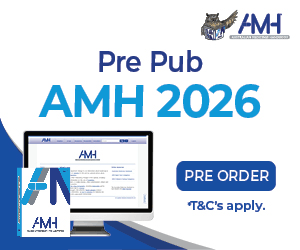“It’s high time that our nation, and indeed the world, had a serious discussion about women’s health,” declared Ged Kearney, Assistant Minister for Health and Aged Care, at the 2024 World Health Summit Regional Meeting, held in Melbourne earlier this year.
Speaking on a panel of women’s health experts discussing key challenges to achieving health equity for women and girls, Ms Kearney said she believes the issue is building momentum as an area of priority.
Women and girls experience health inequalities across the lifespan, attendees heard. This includes carrying the sexual and reproductive health burdens of fertility and fertility management, unwanted, unintended, or mistimed pregnancy, contraceptive responsibility, menstrual disorders including endometriosis, pregnancy, childbirth and lactation, female specific cancers, and menopause.
“My personal mission is to shine a light on gender bias in our health system and make reforms and lead cultural change so that women have the health system that they need,” said Ms Kearney.
Chair of the government’s National Women’s Health Advisory Council, Ms Kearney pointed to the recently launched 10-year action plan, Working for Women, as an example of new strategies to address gender inequality, including in health.
“Too often, women’s health conditions see terribly long delays in diagnosis, including endometriosis, with a painful average diagnosis time of nine years. Nine years of monthly agony and failing to get answers or adequate treatment.”
Other issues include the stigma and silence surrounding issues like menopause, miscarriage, or pelvic pain, said Ms Kearney. In March, the advisory council released its first End Gender Bias survey, finding that two out of three women experience bias and discrimination within Australia’s health system. Many women reported having their symptoms or pain dismissed or were given insufficient treatment recommendations like paracetamol and a hot water bottle.
Ms Kearney said society must do better for women and girls into the future but conceded that there is no quick fix thanks to centuries of biases and cultural assumption. Nevertheless, she believes the advisory council’s advice to government can play a huge role in meaningful reform that eliminates gender bias in the health system across four focus areas – access, care and outcomes; empowerment; research; and safety.
Examples of progress include the establishment of 22 endometriosis and pelvic pain clinics across the country, expanding the roles of highly-trained nurse practitioners and midwives to improve access to healthcare in regional and rural areas, and improved access to abortion, Ms Kearney added.
“But I don’t just want this for our women, I want it for women everywhere,” she stressed.
“We know there are additional challenges facing women in the Asia Pacific region. This includes access to contraception, higher rates of maternal death and morbidity, high rates of violence against women, and general lack of health workers to provide care.
“The Australian government is committed to improving women’s health and empowering women and girls in the Asia Pacific region. We are working in close partnership with Pacific countries and the region to support implementation of the Pacific Leaders Gender Equality Declaration (PLGED). This will accelerate action to prevent and eliminate gender-based violence and ensure universal health coverage for all Pacific people.”
Travelling from Fiji, Dr Titilola Duro-Aina, Pacific Chief of Health, United Nations Population Fund, highlighted two critical challenges in the Asia Pacific Region – the health sector’s response to sexual and gendered-based violence, and eliminating cervical cancer.
The Pacific has some of the world’s highest rates of physical and sexual violence against women, Dr Duro-Aina pointed out, demanding change. Yet despite investments across other sectors to improve response, including training police, rates remain high.
“The missing link is the health sector,” she said, suggesting that the Pacific is not service-ready to respond to the “significant public health issue”, including a lack of staff to provide counselling and integration in primary care.
“We have not realised that this is something that we need to face. The truth is that health workers are most of the time the first responders and, sometimes, the only point of contact outside the home for gender-based violence survivors. Health workers see them all the time. They come through their clinics, they come to their consultations, but what happens? They just treat the wounds; they treat the physical harm. They don’t go on to identify what the real problem is, to help and support these women and ensure that they get the help that they require.”
Secondly, Dr Duro-Aina listed cervical cancer as a major problem facing Pacific Island countries, stressing that more needed to be done to achieve elimination.
Professor Caroline Homer, a midwifery leader and Co-Program Director, Maternal, Child and Adolescent Health and the Burnet Institute, touched on the session’s themes – how far have we come? How much further do we have to go? And what’s needed to get there?
Focusing on stillbirth, Professor Homer said that while some countries like Papua New Guinea have made huge improvements in maternal mortality rates, there is still a long way to go at a global level.
“Stillbirths are coming down and that’s a good thing. We are actually saying the word ‘stillbirth’ at global meetings like this. We’re actually acknowledging that stillbirths happen and acknowledging to women that stillbirths happen.”
Going forward, Professor Homer said women’s health was an “unfinished agenda”. Countless reports already show what’s needed, she argued: commitment and investment around equity and strengthening midwifery across the Pacific.
“For me, as a midwife, service delivery is absolutely critical,” she said.
“We have to have a health workforce. The Pacific particularly is struggling with a health workforce, the push to migrate, the push to find better places across the shores. In Australia, we have to be really careful that we don’t steal the health workforce from the region. Of course, people want to go somewhere where they’ll have better opportunities, more money for their families, more opportunities for their communities. But we need to build the health workforce in the countries and to deliver maternal and newborn healthcare, we have to have a health workforce.”
Final speaker Cheryl Carcel, Head, Brain Health Program, at the George Institute for Global Health, discussed the impact of noncommunicable diseases among women, including cardiovascular disease, and the need for better representation of women in clinical trials, and more continuity of care.
“We need to improve awareness of the risk of noncommunicable diseases in women among the lay public patients and clinicians,” Ms Carcel said.
“We need to include the voices of women with lived experience, especially those in medically underserved and structurally disadvantaged populations. During research, priority setting and design. We need to develop evidence-based strategies to improve the recruitment and retention of women in clinical trials. And this includes women from culturally and ethnically diverse backgrounds.
“We need to develop new models of care to integrate non-communicable disease screening and prevention into existing services for women when they’re doing family planning and antenatal care and strengthening these services so that they can deliver continuity of care.”








